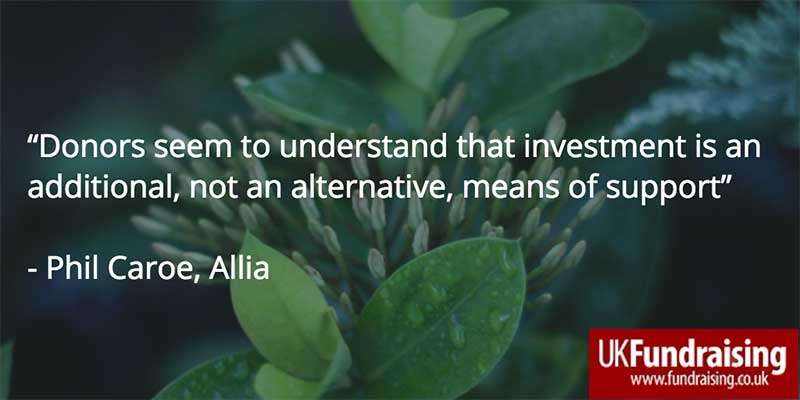Why fundraisers shouldn’t fear social investment
As the social investment market continues to grow, fundraisers could be forgiven for wondering what this means for traditional giving. While it’s increasingly recognised that both forms of funding have their place, it’s not always clear how they will sit comfortably alongside each other.
It’s not hard to see why fundraisers might have concerns. If donors are offered the chance not only to support your charity but also get their money back, surely that sounds like a better deal than making a donation they’ll never see again?
Our experience at Allia, however, is that social investment and traditional fundraising don’t compete in that way. Donors seem to understand that investment is an additional, not an alternative, means of support – a way of doing some extra good with the savings you can’t give away.
In fact, social investment offers the chance to reach new supporters that you would have struggled to engage through traditional fundraising methods. Major donors, in particular, may have a limited donation pot and a queue of charities at their door wanting a piece of it. Offering an investment opportunity can provide a way to skip that queue and access a different pot of money.
Long-term engagement
Social investment can also be a way of funding projects that struggle to attract donations. When we were founded back in 1999, our focus was on raising funding for projects addressing unemployment. Persuading people to give away their hard-earned income to help those without jobs was extremely hard, so we created the charitable bond model as a way of raising money through investments instead.
Offering an investment opportunity certainly enabled us to attract more people to this particular cause than we could have done by asking for straight donations. What we also found was that our investors then became closely engaged with the projects they’d supported over the life of the bond. By the time their five-year bond had come to an end, they’d seen the positive impact their money had made, and many chose to go a step further and turn some or even all of their investment into a donation.
Words of advice
Before leaping into social investment as a panacea to funding cuts and donation shortfalls, charities do need to be sure it’s right for them. A loan might make the bank balance look healthy, but it’s not a substitute for income and does have to be paid back. So charities have to be confident they can generate sufficient income to repay the investment and any interest. For this reason, social investment is not a fundraising strategy, and will often be led by the senior management team as part of the charity’s overall strategic planning.
There are also strict rules, designed to protect investors, around promoting investment opportunities and who is allowed to invest in certain types of product. You’ll need to take appropriate advice before making any kind of communication that encourages someone to make a social investment.
Finally, any confusion among your supporters can be avoided by being clear with them about why you’re raising finance and what you’re asking for. Explain how the finance will help you deliver your mission and generate more income, so they know their donations won’t be going into the pockets of your investors. And be clear about why voluntary income is still essential for many other activities.
If we find the right balance, there is no doubt that social investment and fundraising will not only peacefully co-exist, but thrive together.
Phil Caroe is Director of Social Finance at Allia.
Main image: social investment, recycling money for good by Youlan on Shutterstock.com
Advertisement




